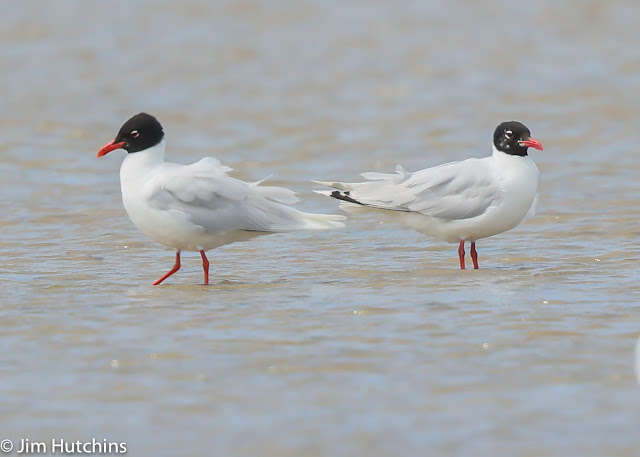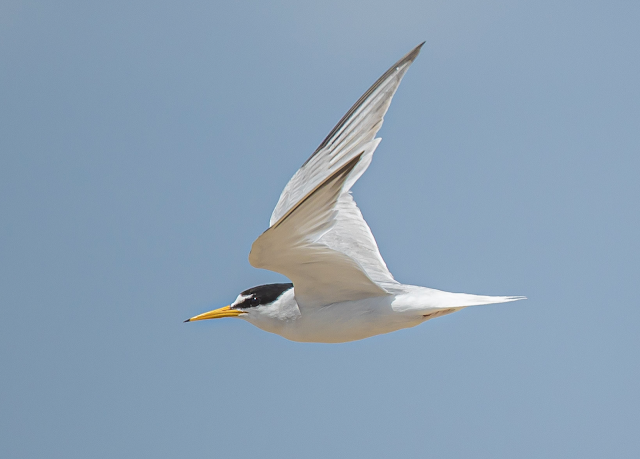 |
| Balearic Shearwater |
The Balearic Shearwater is a red listed critically endangered bird with a total remaining population of approximately 6,000 birds. They breed in the Balearic Islands and winter out at sea but some enter the Atlantic in mid to late summer reaching the south coast of England. In common with many Shearwaters they mainly nest in burrows and are hence very vulnerable to predation by man introduced rats and cats. Tourist development in and around their nesting sites is also a major issue and they are rapidly being driven to extinction. It is sadly estimated that the population is decreasing by approximately 10%/year. At the current rate of decline they will be extinct in 40 years. Yet another example of how well we are looking after our planet for all its residents!
In the past week of so small flocks of these birds have been reported along the south coast. I have never seen a Balearic shearwater and hence needed no further motivation to visit Portland Bill on Tuesday where there have been regular sightings over the past week.
My first stop was the observatory where I had recently become a member. I picked up my membership pack and chatted to Martin, the friendly warden of some 30 years standing. He confirmed that some 50 Balearics were feeding with a large flock of Herring gulls below the cliffs at the end of the bill. I quickly set up my scope and got on the Balearics in case they departed, (tick! tick!) and then drove down to the headland for a better view. The Balearics were showing well through scope and bins but a little distant for anything other than record shots. There were also a few of their close cousins, Manx Shearwaters, which allowed a detailed study of the differences between the two. Balearics are a little larger than Manx and appear much more heavy set with their feet projecting well beyond the tail. Manx normally shows smart and contrasting plumage while Balearics are brown and rather dusty in appearance.
After two very pleasant hours I departed the bill and headed to Chesil Beach to see the Little Tern colony. I parked down a side road by the Ferry bridge inn and walked back along the bridge and around the lagoon to the colony. There were ten or so very smart looking summer plumage med gulls on the lagoon which constituted a very belated year tick for me. The whole area around the Little Tern colony is, for very obvious, reasons roped off but you can get a good view of the area from the top of the shingles. The individual nests are number marked with one hundred or so “nests” which consist of little more than a scape in the shingles. Most had a parent still brooding the very vulnerable young from the many Herring Gulls and other predators flying over looking for an easy meal. The Herring Gulls are huge in comparison to the Little Terns but the urge to continue the gene line is strong and the little Terns are very aggressive in protecting their offspring. The partner of the brooding bird was flying the short distance out to sea fishing for the hungry chicks which allowed a few inflight shots to be grabbed.
As a very interesting footnote to this visit one of the Shearwaters off the bill while I was there is being claimed as a Yelkouan Shearwater. There is only one accepted record of this very rare bird in the UK. The difference between Manx and Yelkouan shearwaters is, to say the least, very subtle involving very small differences in plumage, body posture and flight. To make matters worse Yelkouan’s also hybridise with Balearics! Having looked at the photos and videos of the presumed Yelkouan and compared them with all my photos, particularly the wing moult pattern, and then reading various scholar articles on the differences, I basically just can’t call it! I was definitely there when the photo was taken and spent two hours watching the Shearwaters but I’m not ticking it on that basis – it will just have to remain as a question mark for me.
In recent weeks I have also done two trips to RSPB Dungeness in search of a Gull-billed Tern. Not the rarest of the rare with some 350 UK records but still a lifer for me. On the first visit it was seen before I arrived and not again until late evening long after I departed. There was a supporting cast providing some consolation in the form of a Black-winged Stilt, more or less an annual tick for me but new for the year. The second visit was on a truly damp and dreary day and on arrival when the car park opened at 09:00 there was no one else present. My heart sank at the thought of trying to find the bird single-handed across the large expanses of freshwater it had last been seen on. After an hour or so or peering through my scope into the rain and getting thoroughly wet I was complete fed up and retired back to my car for a coffee. I meet two other birders in the car park who said that they had just seen the bird very distantly on a gravel bank at the side of the ARC lake. Cue a mad dash to the viewing point and a distant scope view of the bird sheltering from the elements with a few gulls and two Pochards. Not the best view of a bird I have ever seen but still a nice life tick. After I departed the bird did the same and has not been seen since so I got there just in time second time around!
So onto the demise of my beloved f-type. I was driving home from the Asian Desert Warbler twitch a couple of weeks ago down the M1 when I lost control of the car. Not what you want to happen in the outside lane in pouring rain while doing “70” mph. My first thought was that a tyre had blown out but post-accident inspection seems to indicate that the drive shaft had snapped! The car hit the central reservation, bounced on and off of it complexly out of control for a hundred meters of so that spun three or four times across the motorway before coming to a standstill on the hard shoulder. What saved me was the car first running along the central reservation which gave everyone behind me the time to slow down before I spun across or I would have been a goner for sure. I was badly shaken up and a little bruised but was very lucky to walk away from the car. Subsequent inspection of the car showed the driver’s side wheel and suspension assembly missing, they were on the other side of the motorway, and a clean break in the drive shaft- almost as though it had been saw through.
I toyed with the idea of getting another f-type but decided in the end that my boy racer days along with my motorbike days should be consigned to history and I’m now the proud owner of my wife’s old Land rover discovery – she has a new one! A much more sensible and practical car for my hobby!
Footnote – my blogs are posted with sometimes rather imaginative spelling and grammar due to my extreme dyslexia!




Ruddy Hell mate, Glad you're ok
ReplyDeleteBlimey @Jag - phew!!!! x
ReplyDelete